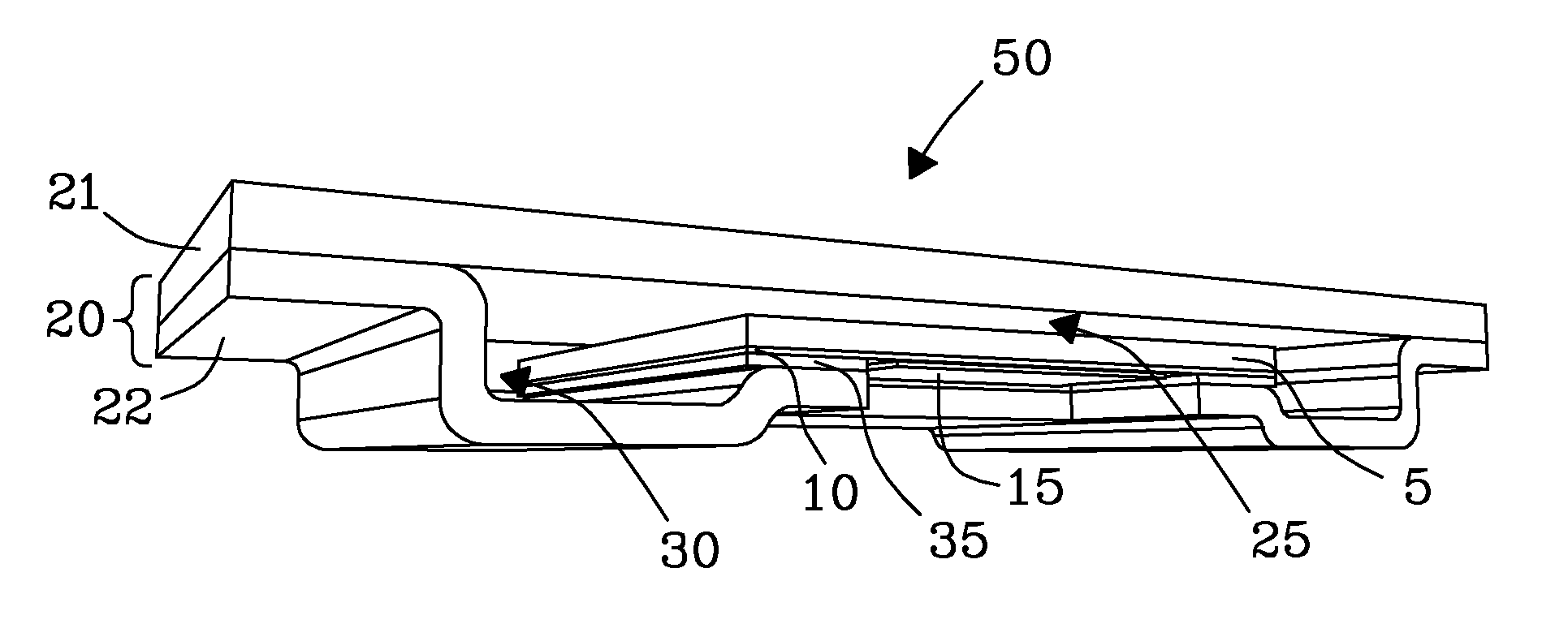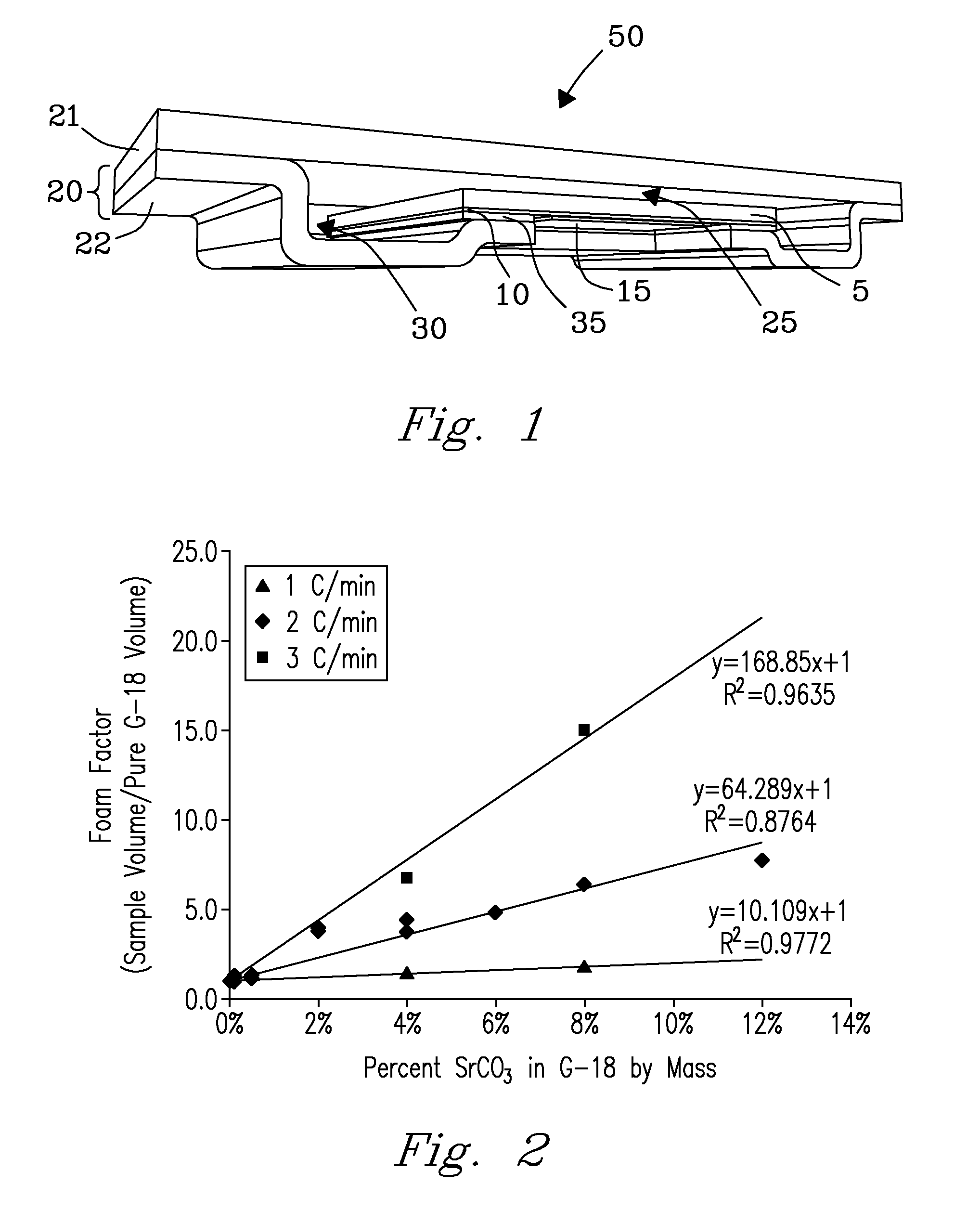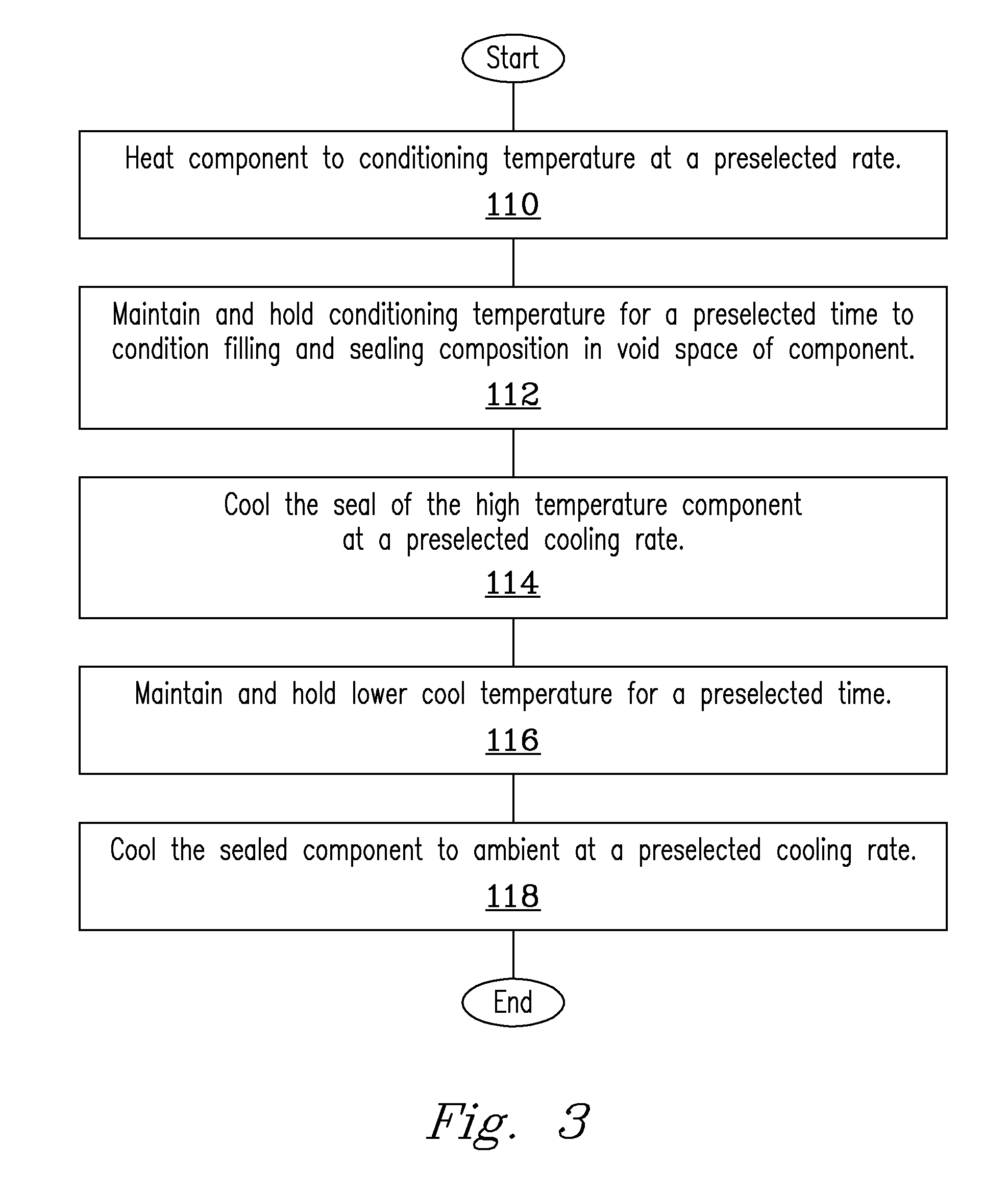Glass composition and process for sealing void spaces in electrochemical devices
a glass composition and electrochemical device technology, applied in the field of foaming glass compositions, can solve the problems of reducing the efficiency of the device, reducing the output voltage and utility of the device as a power generator, shrinking of glass-containing seals used to couple components within the stack of sofc, etc., to achieve the effect of minimizing adverse chemical reactions and expanding the volume of glass
- Summary
- Abstract
- Description
- Claims
- Application Information
AI Technical Summary
Benefits of technology
Problems solved by technology
Method used
Image
Examples
example 1
Glass Paste Form
[0045]In an exemplary test, a foaming glass paste containing G-18 glass was dispensed at a uniform rate (e.g., 0.075 g / linear cm) into tolerance channels 30 located between a steel frame 20 of a solid oxide fuel cell 50 on the anode side of the device 50 using a pressurized dispensing tool. A consistent bead of glass paste with an approximately hemispherical cross-section was applied, having typical dimensions: 2-mm wide and 1-mm high. Device components were dried in an oven at 80° C. to remove solvent from the paste. A separator plate 21 was welded to a lower plate 22 to form a cassette, covering the bead of dried paste. A stack (not shown) consisting of five cassettes 50 was assembled. Expansion (i.e., foaming) of the foaming glass paste in the tolerance channels 30 to seal the tolerance channels of the devices 50 was achieved concurrently with stacking of the five cassettes 50 together and coupling them together using a conventional, non-foaming glass. Results dem...
PUM
| Property | Measurement | Unit |
|---|---|---|
| temperature | aaaaa | aaaaa |
| melting temperature | aaaaa | aaaaa |
| crystallization temperature | aaaaa | aaaaa |
Abstract
Description
Claims
Application Information
 Login to View More
Login to View More - R&D
- Intellectual Property
- Life Sciences
- Materials
- Tech Scout
- Unparalleled Data Quality
- Higher Quality Content
- 60% Fewer Hallucinations
Browse by: Latest US Patents, China's latest patents, Technical Efficacy Thesaurus, Application Domain, Technology Topic, Popular Technical Reports.
© 2025 PatSnap. All rights reserved.Legal|Privacy policy|Modern Slavery Act Transparency Statement|Sitemap|About US| Contact US: help@patsnap.com



